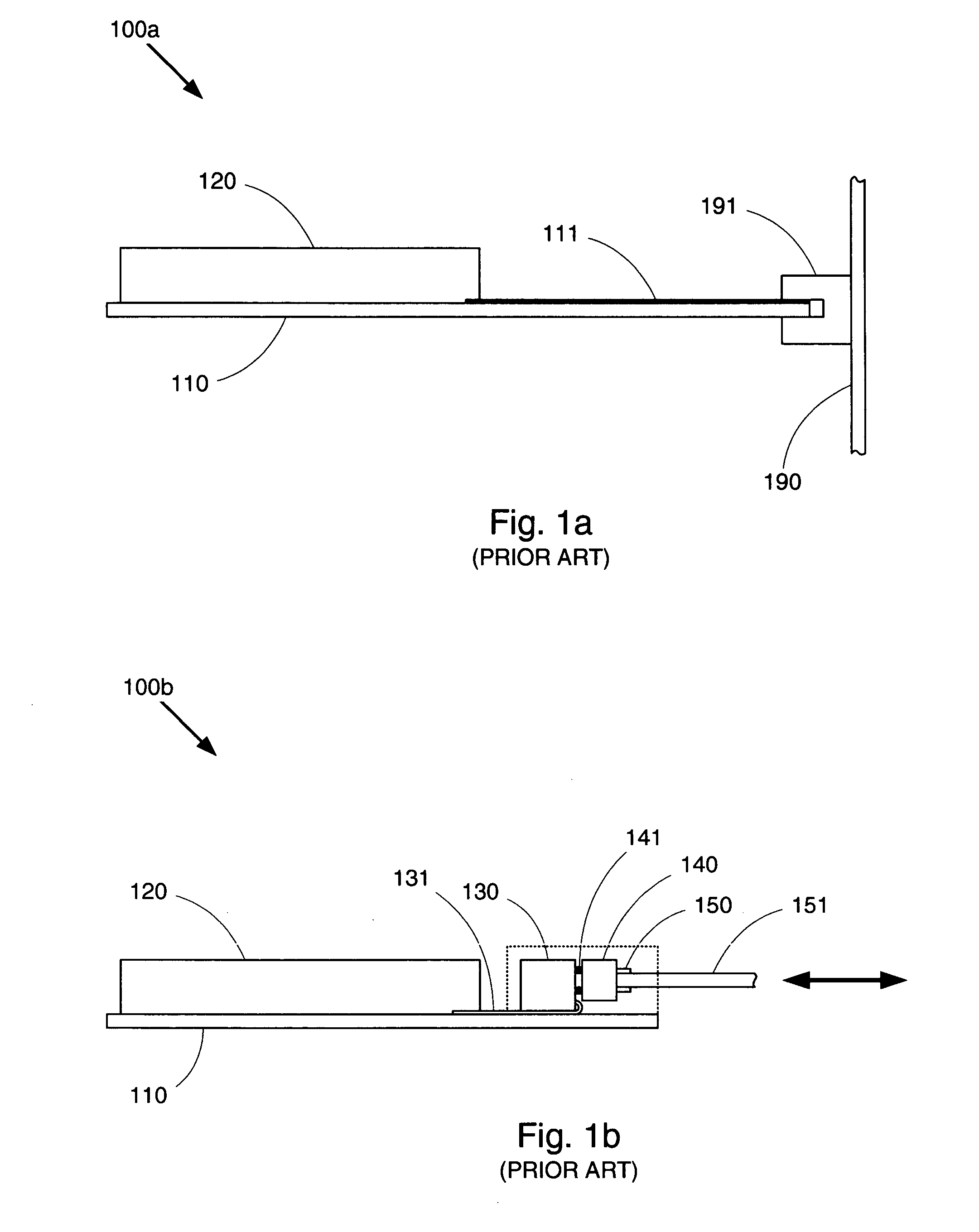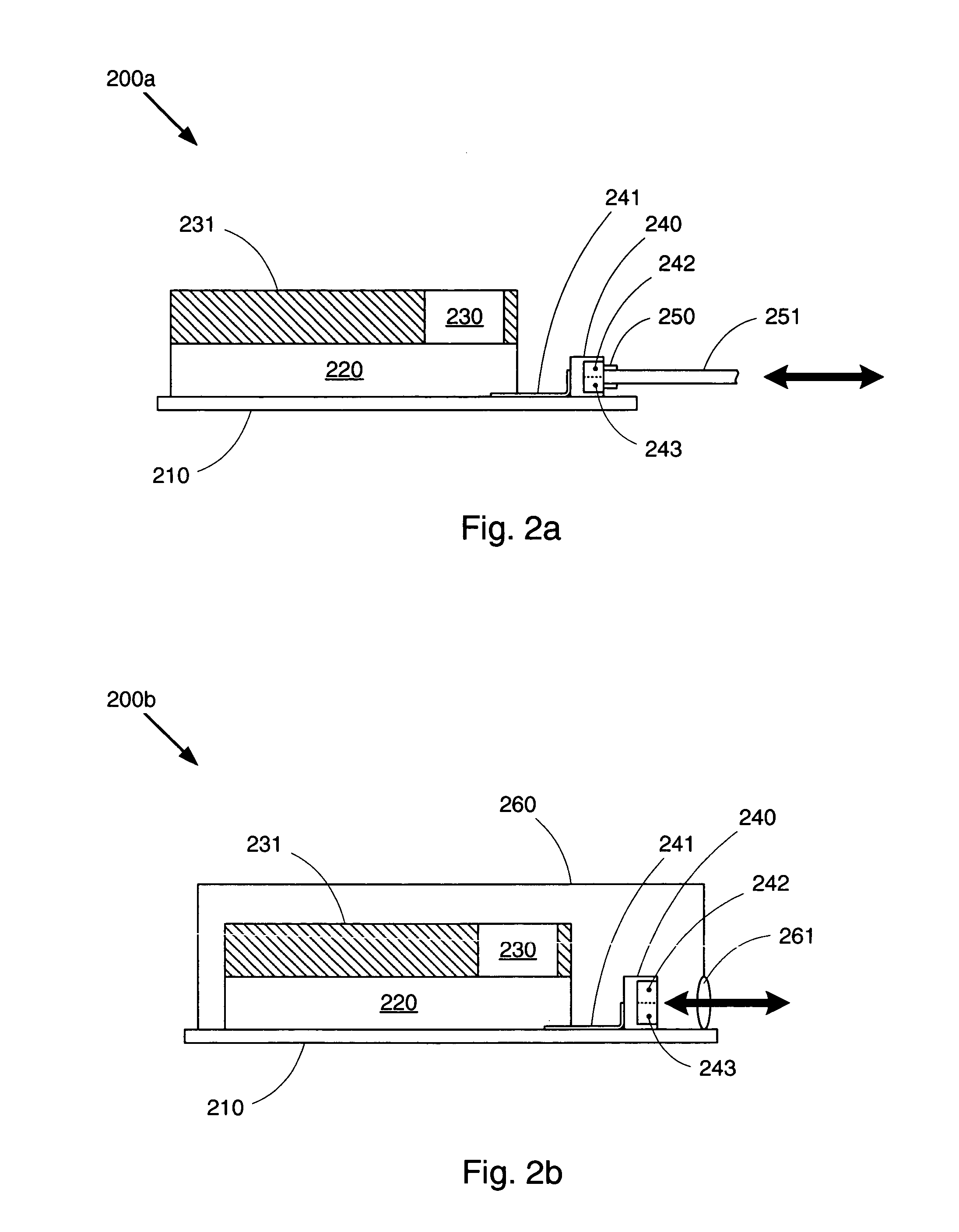High speed serial I/O technology using an optical link
a high-speed serial i/o technology and optical link technology, applied in the field of serial communication, can solve the problems of data link degradation at higher bandwidths, excessive noise and signal attenuation, and limited bandwidth capability of conventional data communication technologies, and achieve accurate, high-bandwidth connection, and minimize throughput degradation
- Summary
- Abstract
- Description
- Claims
- Application Information
AI Technical Summary
Benefits of technology
Problems solved by technology
Method used
Image
Examples
Embodiment Construction
[0019]FIG. 2a shows an IC assembly 200a that incorporates an optical transceiver in accordance with an embodiment of the invention. IC assembly 200a comprises an IC 220 mounted on a support structure 210. IC 220 can comprise any type of IC, such as a field programmable gate array (FPGA), a microprocessor, or a memory module. Support structure 210 can comprise any structure onto which IC 220 can be mounted, including a PCB or a standard chip package. The optical communications capability of IC assembly 200a is provided by a SERDES 230 formed on IC 220 and an opto-electronic converter 240 connected to IC 220 via a flex interconnect 241. Opto-electronic converter 240 converts electrical signals to and from optical signals and therefore includes a transmitter 242 and a receiver 243. Transmitter 242 can comprise any device for providing the electrical-to-optical signal conversion, including a light-emitting diode (LED), a VCSEL, or even a light modulating device. Similarly, receiver 243 ...
PUM
 Login to View More
Login to View More Abstract
Description
Claims
Application Information
 Login to View More
Login to View More - R&D
- Intellectual Property
- Life Sciences
- Materials
- Tech Scout
- Unparalleled Data Quality
- Higher Quality Content
- 60% Fewer Hallucinations
Browse by: Latest US Patents, China's latest patents, Technical Efficacy Thesaurus, Application Domain, Technology Topic, Popular Technical Reports.
© 2025 PatSnap. All rights reserved.Legal|Privacy policy|Modern Slavery Act Transparency Statement|Sitemap|About US| Contact US: help@patsnap.com



